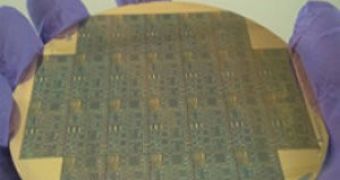It's never a good idea to try and light something on fire if you think you might need it later, and electronics are sometimes more vulnerable to flames and otherwise induced great heat than other objects. Engineers are trying to change that though.
Water may be the kryptonite of electronics devices, unless they're clad in a waterproof case of some sort, but fire is a lot harder to shield against.
Sure, there have been rugged laptops and the like that could withstand some heat, but not outright flames, no matter how well the outer shell got through the experience.
You see, even if the outer enclosure of a laptop or PC is tough enough to go through a fire without melting, it will still conduct heat well enough for the insides to sputter and die, even melt.
That goes especially much for wires, and any circuits really. That's why engineering researchers at the University of Arkansas have been up to their elbows in their latest project.
With help from funds provided by the US National Science Foundation, they have invented circuits that can survive temperatures of 350 degrees Celsius / roughly 660 degrees Fahrenheit.
And by circuits, we mean the actual building blocks of computer and CE parts, down to the drivers, controllers, analog/digital circuits and even processors (CPUs, APUs, etc.).
Fires and other outside heat sources aren't the only things that the new circuits can withstand. It's also the self-generated caloric energy that will be easier to cope with. Indeed, that was actually the core concern.
Electricity generates heat whenever it passes through something, which is why a third of all power produced by electrical/nuclear/wind power plants has to pass through a power electronic converter or motor drive before it reaches users.
Otherwise, the strength of the current would cause the thinner, smaller, sensitive circuits in computers, home appliances and gadgets to melt, smoke, burst into flames, even explode. The new circuits will allow the size and complexity of these power transforming systems to be reduced.
The key to the latest breakthrough is silicon carbide, a semiconductor material that is both a good thermal conductor and has an extreme tolerance for high voltages. Professors of computer engineering Alan Mantooth and Jia Di from the University of Arkansas led the team.
So far, improvements have been achieved in signal processing, controllers and driver circuitry, signal synchronization, frequency synthesis, and modulation and demodulation schemes.
In layman terms, the breakthrough in heat-resistant circuits means that future devices will be able to withstand far higher voltages without a problem, as well as shrug off certain fire-related hazards that would be “lethal” today (operating temperature for anything, even SSDs, doesn't go above 80 degrees Celsius / 176 degrees Fahrenheit very often).

 14 DAY TRIAL //
14 DAY TRIAL //